The owners of fluffy, charming rabbits are asked, first of all, the question - in what conditions their favorites should live.
How to choose a place to install a cell
Let us dwell first on the household content of eared animals. Two options are possible:
- open content (in air);
- placing cells indoors (for example, in a barn).
To select the location of the cell installation, you must follow the rules.
- Air humidity should not exceed 60-75% (therefore, the cells are installed in a dry removed from the reservoirs, an elevated place).
- Insofar as rabbits categorically do not perceive straight sun raysThe cells must be located ideally - among trees that give a shadow, or protected by an artificial hedge, scattering direct sunlight.
- Drafts are frequent cause of rabbits diseases. Therefore, air movement exceeding the speed of 30 m / s is undesirable. However, cell ventilation is one of the rules that should be strictly observed. Otherwise, evaporation of allocations will damage the health of your pets.
At winter, the time of the rabbits should be warm, so that the temperature is fluctuated in the range of 10-20 s. Special attention is paid to the insulation of the Musicians and branches for rabbits.
If the animals are contained in a closed room, then it must be:
- necessarily plastered
- well ventilated
- lighted in winter no more than 10 hours.
In the perfect version, the room for the content of animal cells should have a window on the south side of the entire wall.
Cells in the open space are also preferably located in accordance with the sides of the light - the face side east.
And another nuance - cells need to be installed at an altitude of 0.8-1.0 m from the ground. It will save rabbits from the bites of home rodents and will greatly alleviate the cell service by the breeder.
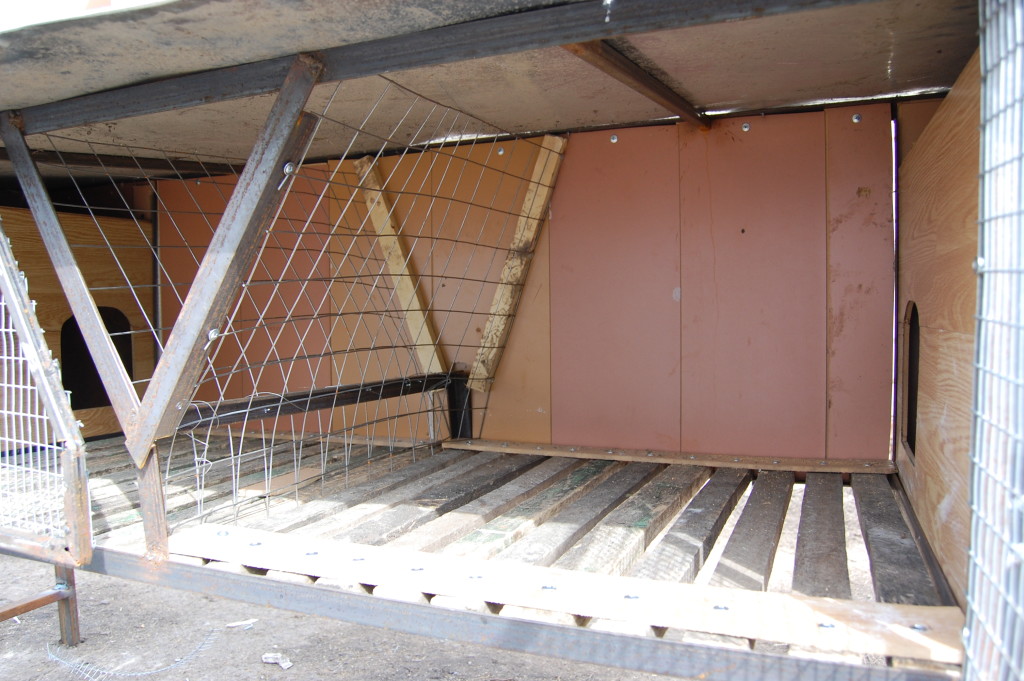
The classic variant of the cells for the content of rabbits is the design of the following dimensions:
- 50 * 70 * 30 cm - for young people;
- 50 * 100 * 30 cm - for rabbits.
The entire space of the cell is divided into dulfillment and deaf backwards, where rabbits of any age are refuge in the minutes of "dangers" and bad weather. The length of the wagging department may vary, but usually up to 50 cm long and width. The snacks are served by rabbits - this is a box of 25 cm long and a width of 50 cm. It will be covered tightly, and only a removable door is attached from the front side. Lases, located in the wall adjacent to the walking room, and is usually 17 * 17 cm.
The specificity of the structure of the rabbit cell is that the mesh or whether the netting gear is usually equipped for the free passage of waste into the pallet under the floor.
The height of the facial side of the cell is usually 55 cm, and the rear wall is 30 cm. Those, the cell involves the sloping roof, which, in the case of a "tier" cell placement, will be simultaneously a pallet for higher cells, due to which it is common to galvanized iron.
Materials for making cells
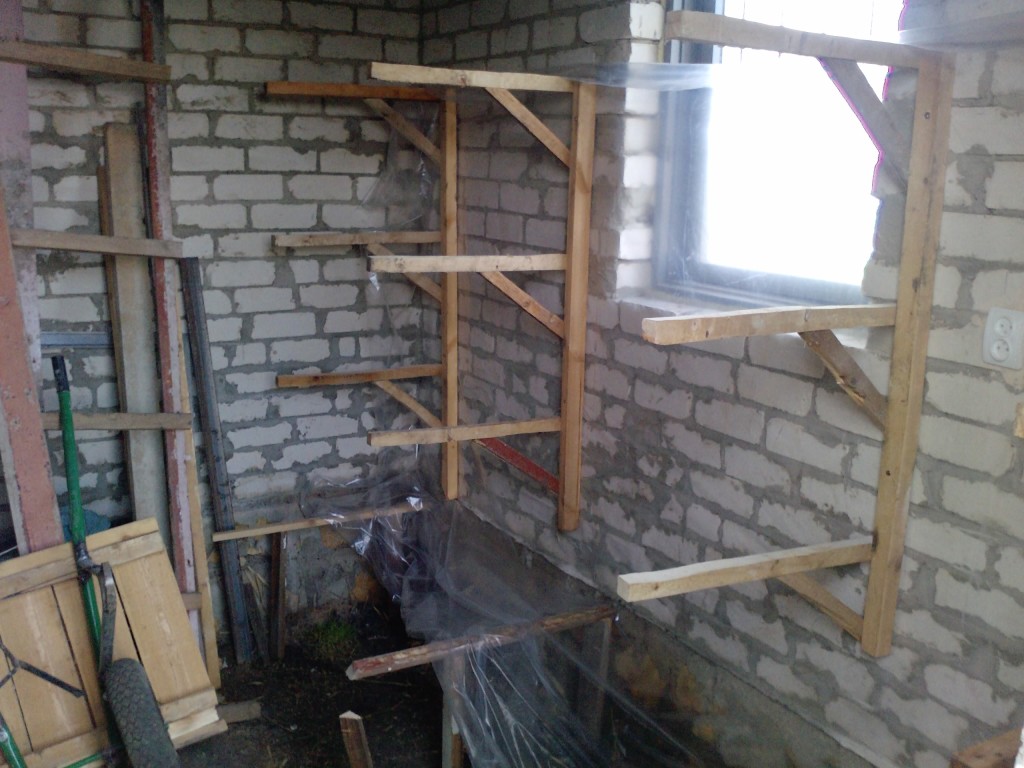
When choosing materials for the manufacture of cells, it is better to give preference to a high-quality and ecological tree. Wood bars are suitable for construction frames. To cover the walls, a board or plywood fit. Chipboard is unacceptable, because he gains water, swells and crumbs.
For the flooring of the floor, a welded grid with cells of 1.7 * 1.7 cm are used, or wooden rails up to 3 cm wide. Rakes are located at a distance of 1.5 cm from each other, for the free passage of waste into the pallet. If the distance between the rails is larger than the specified, or the mesh cells are larger, then it is fraught with lap fractures when stuck in large openings. Reiki for the floor can be plastic.
One condition should be observed strictly - the material for the manufacture of cells should be smooth, without hiding foreign inclusions.
Dimensions and drawings Cells for rabbits
Cell dimensions for rabbits are in direct dependence on:
- breed rabbits;
- the selected content scheme (mini farm, battery-type cells, on gold
- etc.);
- regulatory indicators of the required areas (for example, for rabbits - 0.5-0.7 sq.m.,
- the males will need - 0.17 sq.m., and young people- 0.12 sq. M).
In practice, houses of two connected cells of 100 * 55 cm are often used. In these cells, the uterine compartments are adjacent to the outer walls of the cell and are communicated with the stern departments with 17 * 17 cm. On the front side of the house there are doors: two solid in the nesting compartments, and two mesh in stocking spaces. Between them there are nursery and drinkers. Feeders are usually attached to the front side of the mesh doors.
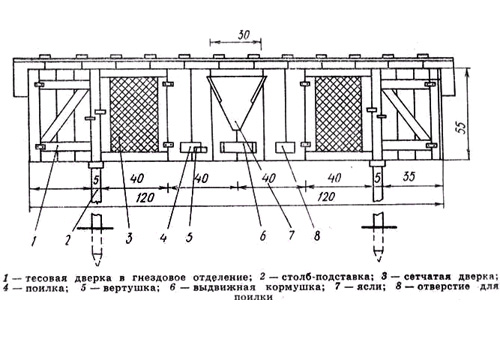
All-fiber cell
This variety of cells is designed to accommodate in the premises of the livestock type and even in ordinary snowy sheds. The walls and ceiling of the cells are trimmed with a mesh with cells of 2.5-5 cm, gender - 1.7 * 1.7 cm.
The main advantage of these cells is the simplicity and availability of cleaning and disinfection. This will require only a good brush and a propane burner, which will help you easily get rid of unnecessary microorganisms and clusters of rabbit fluff.
All-run cells occupy significantly less than the place, which is also their advantage in the conduct of the farm.
Difficulties in cell construction
The main problem in the manufacture of cells with their own hands is the lack of high-quality and detailed drawings, or unjustified high cost of licensed options (for example, drawings from Rabitax).
The second difficulty facing a home master is the nonstandarity of the size of the used building materials. And as a result, the need to buy materials under the order. If there is a deficiency of experience in the manufacture of cells, then the item of the costs for materials turns out to be exorbitant.
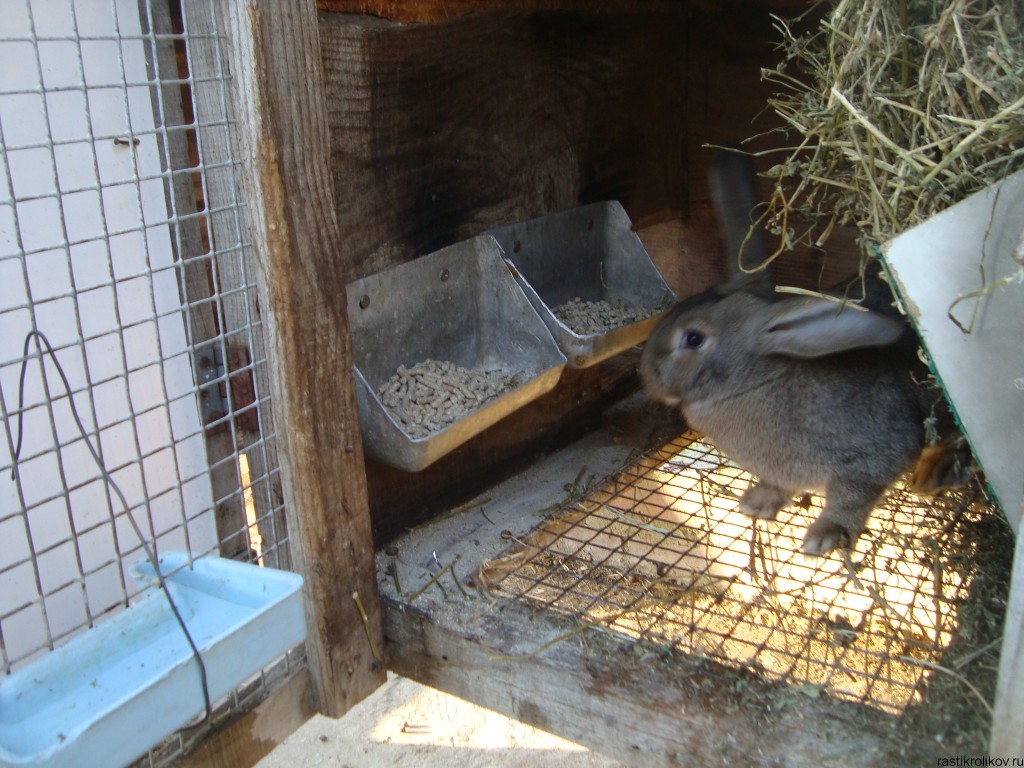
Beginner masters make similar mistakes in the construction of cells:
- saving material leads to flavors, which badly affects the health and reproduction of rabbits;
- the uterine or nest compartment must be stationary (snacks frighten the rabbit and can serve as the crib crown).
To reduce stress with a swelling of young people, you can use a cell with a stationary room for a rabbit, in which a 12 * 12cm lase will not allow the rabbit to constantly be with rabbits. And the moment of the branch of the rabbit will not be so stressful.
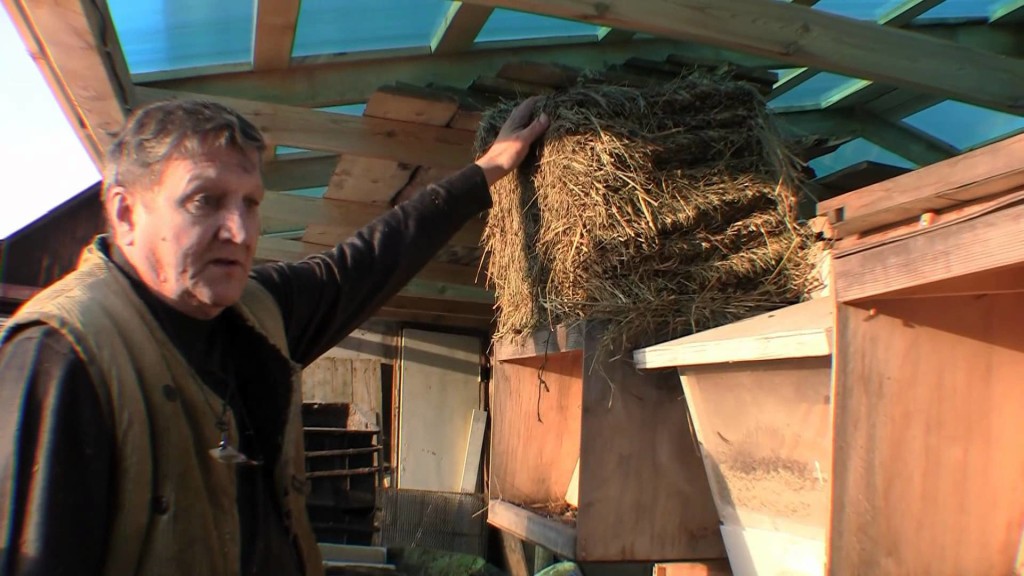
N.I. cells are very popular. Zolotukhina. Their basic the difference is the absence of pallets, i.e. Solid Flat Slate, and the presence of a grid is only with the back of the cells on the width of 15-20 cm. The speed of the location of one cell above the other helps to get rid of waste from the "upper floors" on the "bottom". A characteristic feature is also the lack of nesting offices. The rabbit is given the opportunity to build an independent Musician from the hay. Feeders in the doors are attached to rotating nails, thanks to their hinge design is easy to clean.
On our site there is an article dedicated to which you will find all practical advice and recommendations from the author, in addition you can familiarize yourself with the drawings and cell sizes.
Cells from flowers
This is a kind of four-quarter house, with an equipped ventilation system and "sewage". There are also mounted satellites and gravitational feeders and drinkers. Nursery for the hay is rich in a galvanized grid and are attached to the frame with nails. All vulnerable parts are strengthened with tin plates. In the winter, the branch for young rabbits and the satellites are heated by conventional medical harvesters. It is unusual to turn the face of the cell on the south side.
Rabbitax for beginner rabbit
Cells from the company Rabbitax features a kind of decor and environmental friendliness ( characteristic of them for them to redirect airflows). Basically, they are intended for large farms. But there are acceptable options, for example, a cell of two compartments. For a novice master drawings are still complicated. And the main minus is high cost in manufacturing.
Copyright
I would like to celebrate the cells for the rabbits Mikhailov. The main advantage of mini farms is compactness (the ability to contain 25 individuals on the area of \u200b\u200b25 sq. M. Taking into account the distance between the houses in 70 cm). Undoubted advantage is also automation of cleaning waste into a sealed container. An essential disadvantage of Mikhailov cells can be called expensive materials for construction and undoubted professionalism of the Contractor.
The design of E. Ovidienko attracts attention. Its characteristic distinction of it is a special gate that closes a quail structure containing 24 cells, from wind and weather whims.
Cage do it yourself for decorative rabbits
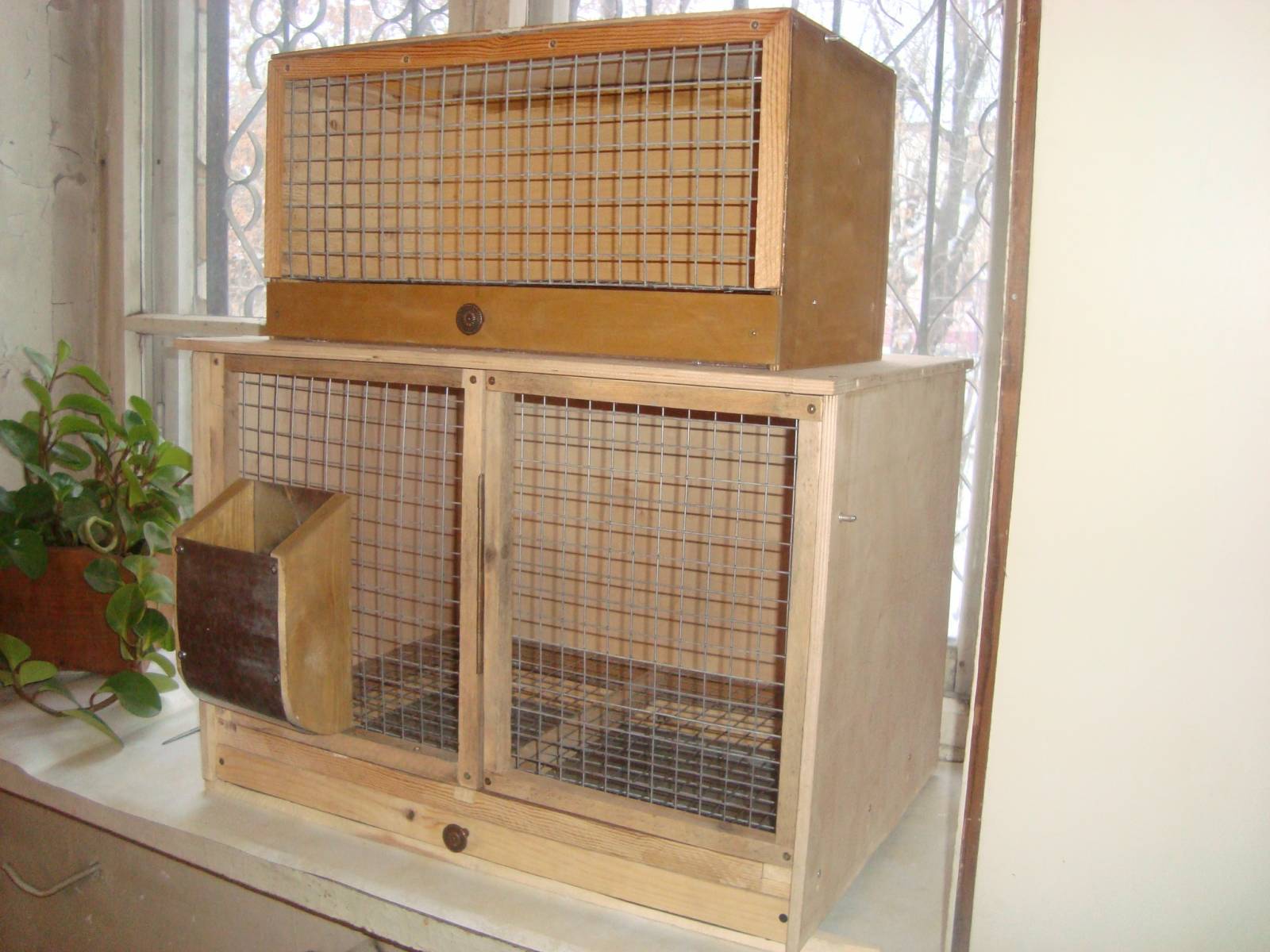
Decorative eared creatures can also exist perfectly in a cage made by their own hands. For a simple solution, it is necessary to determine the question - how often your pet walks in the open space. If the rabbit walks at least 3 hours a day, then there is enough cell size 70 * 40 cm. If most of the time your favorite will hold "at home", then the cell size must be 100 * 50 cm. The rest of the construction rules should be held Cells as for rabbits farms.
Of all the above cells for rabbits, a novice master will be able to choose an optimal option that combines the ease of execution, the convenience of content and acceptable cost.
If you decide to start a decorative rabbit, we recommend reading the same, no less important meaning is.
See also the video - how to make a cage with your own hands.
